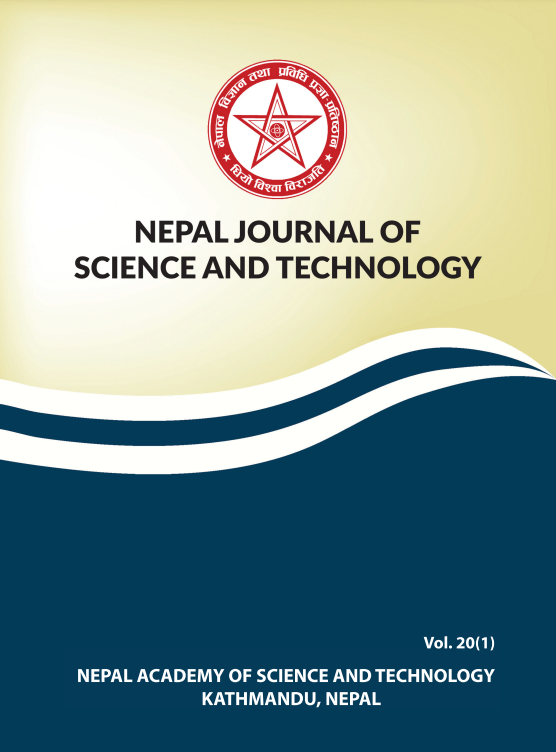Impact of the leaf-feeding beetle Zygogramma bicolorata Pallister on the growth of Parthenium hysterophorus L. in climatically different locations of Nepal
DOI:
https://doi.org/10.3126/njst.v20i1.43355Keywords:
Biocontro, herbivore, Invasive plant, Parthenium weed, Mexican beetleAbstract
The leaf-feeding beetle, Zygogramma bicolorata Pallister, one of the biocontrol agents against Parthenium hysterophorus L., having been established at several locations of Nepal. However, the damage to P. hysterophorus by the beetle has not been assessed quantitatively under different climatic conditions so far. The study was carried out at two locations, namely Hetauda with a tropical climate (540 m asl) and Kathmandu with a subtropical climate (1300 m asl) to evaluate the impact of the beetle on P. hysterophorus. Beetles were released in two different densities (one and two beetles/plant) during the early flowering period (early August). Individual plants were harvested when the initial signs of senescence were observed in mid-September. Plant height and leaf, stem, root biomass of each harvested individual was measured. Plant height, leaf biomass, and stem biomass were significantly higher at the subtropical site than at tropical sites and declined with the increasing density of beetle at both locations. Root:shoot ratio increased with the increasing density of beetle at both locations. The plant height, leaf biomass, and shoot biomass decreased up to 35 %, 73 %, and 54 % respectively at the tropical site and 9 %, 58 %, and 26 % respectively at the subtropical site. Root:shoot ratio increased by 76 % in the tropical site and 30 % in the subtropical site. The present study, therefore, suggests that mass-rearing and releasing of the beetle could be an effective management tool for the biological control of P. hysterophorus in tropical and subtropical climates of Nepal.
Downloads
Downloads
Published
How to Cite
Issue
Section
License
Copyright (c) 2021 Seerjana Maharjan, Bharat Babu Shrestha, Anjana Devktoa, Prakash Chandra Aryal, Muniappan Rangaswam, Pramod Kumar Jha

This work is licensed under a Creative Commons Attribution-NonCommercial 4.0 International License.
Authors retain copyright and grant the journal right of first publication.




